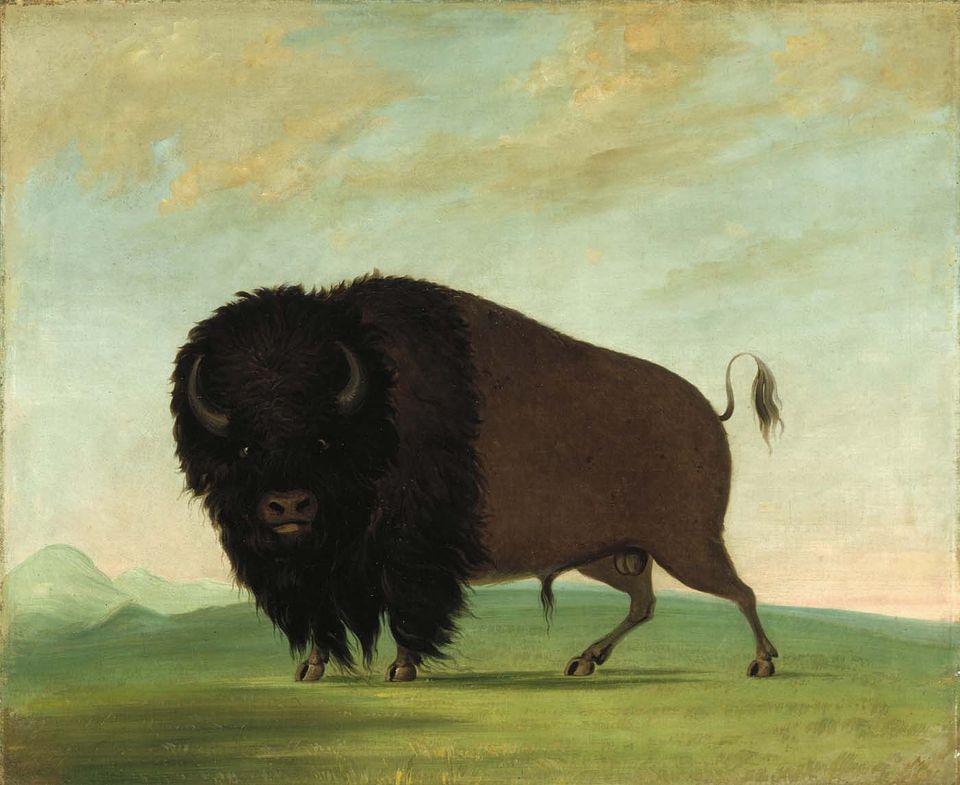
Emily Kotecki is a volunteer in our Education department where she works with the museum's Art à La Cart program.
The bison cart was so interesting! The staff was very enthusiastic and knowledgeable. The bladder was our favorite.—Visitor Comment
Me: “Plains Indians used bison hide for blankets and coats. What did the Indians use to clean those hides?”
Kids: “Soap?” “Blood?” “Water?”
Me: “No, bison brains!”
Kids (and their parents): “Ew!”
Yup – Native Americans really did use every part of the bison. Your kids can find fun facts like this and more at the Art Cart in a gallery of George Catlin artworks on the second floor of American Art.
The bison cart described above, for example, has a box made out of bison hide and fur. Inside the box are various objects from the bison including horns, soap made from bison fat, and a dried bison bladder.
Let's face it, kids can usually only last so long in a place where they can't run or touch things. The Art a la Cart program, where I've volunteered since February, allows kids to touch and feel objects that relate to particular artworks and artists. For example, after I explain what each object in the bison box, the kids and I look at the Catlin paintings to find those parts of the animal.
George Catlin painted the American Indians of the Great Plains—including portraits and their lifeways—during the 1830s. Catlin wanted to depict and preserve Indian culture in his art.
The education department sets up the Art a La Cart program in six locations around the museum in exhibits such as photography, quilts, and folk art. Our next program is Sunday, October 4 and continues on Saturdays and Sundays until the end of November (check our online calendar for specific dates).
Need more motivation to stop by? Your kids will get a "passport," and at each stop they receive a stamp. Collect all the stamps and win a secret prize! Plus, in my experience, it's not just the children who are fascinated by bison brains and bladders.


















